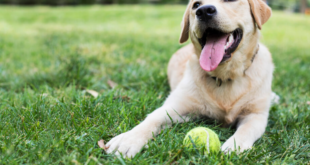For most pet owners, taking their furry friend out for a walk is a cherished bonding experience. However, when it comes to leash training, many puppies can put up quite a fight. It’s a common struggle that can leave even the most dedicated owners feeling frustrated and defeated. But fear not, because with the right knowledge and patience, you can conquer your puppy’s leash training woes and have a happy and obedient pup by your side. It’s time to nip this bad habit in the bud and teach your pup to stop biting the leash once and for all.
Table of Contents
1. The Struggle Is Real: The Frustrating World of Puppy Leash Training
Leash training your puppy is undoubtedly one of the most challenging aspects of raising a new furry family member. The struggle to get your puppy to walk politely on a leash can often be frustrating, leaving many pet parents wondering if they will ever be successful. Here are some common challenges you may encounter in puppy leash training:
- Resistance: Some puppies may resist leash training because they don’t like the sensation of being tethered to you. They may pull, lunge, or try to chew through the leash to break free.
- Distractions: Puppies have a short attention span and can be easily distracted by new smells, sounds, and sights. They may want to chase after a squirrel or play with another dog, making it challenging to walk on a straight line.
- Over-stimulation: Leashing your puppy for the first time can be a hugely over-stimulating experience, especially when in a new environment. An over-stimulated puppy may bark, whine, or pull frantically on the leash, making it nearly impossible to control them.
In conclusion, leash training your puppy requires patience, consistency, and positive reinforcement. With time and a little persistence, you and your furry friend can develop a positive relationship where leash training becomes a breeze. Remember to reward your puppy for good behavior, keep commands simple and consistent, and always practice in a safe and comfortable environment. By doing so, you’ll develop a strong bond with your pup and have them walking politely by your side in no time.
2. Understanding the Reasons Behind Your Puppy’s Leash Chewing Behavior
It can be frustrating to see your new puppy chewing on their leash during walks or even while waiting to head outside. But before getting angry or exasperated, it’s important to understand why your furry friend might be doing this.
One reason could be simply because puppies like to chew on things, especially when their teeth are coming in and they are feeling the discomfort of teething. This is a natural and normal behavior that should be expected when raising a puppy. However, if your puppy is chewing on their leash excessively, there may be a deeper issue to address.
Another reason your puppy may be chewing on their leash is simply because they find it fun or entertaining. This is especially true if the leash is made of a material that is appealing to them, such as leather or nylon, or if the leash has a unique texture or smell. In this case, it could be helpful to provide your puppy with other toys and chews to distract them during walks and satisfy their urge to chew. Consider introducing them to different textures and materials, like rubber or rope, to see what they prefer and to keep them engaged during walks.
3. Tips and Tricks to Help Your Puppy Overcome Leash Biting
If you’re struggling with a puppy that just can’t stop biting the leash, there are a few tips and tricks you can try to help curb this behavior. Here are a few ideas that might help you and your furry friend make progress:
- Use positive reinforcement: Instead of scolding your puppy every time they bite the leash, try offering a treat or praise when they resist the urge to do so. Positive reinforcement can be an effective way to teach your pup what behavior you want them to exhibit.
- Switch up your walking route: Sometimes, a change of scenery can be just what your puppy needs to get out of the habit of biting the leash. Try walking in a different location or taking a different path to give your puppy something new to focus on.
- Invest in a chew toy: If your puppy seems to be biting the leash out of boredom or a desire to chew, try giving them a chew toy or bone to play with during walks. This can help redirect their energy and keep them occupied.
Remember, overcoming leash biting can take time and patience. Be consistent with your training and don’t give up if progress seems slow. With a little effort and perseverance, you and your puppy can enjoy peaceful walks together without any leash biting.
4. The Importance of Positive Reinforcement in Successful Leash Training
Leash training your dog can be a challenging task, but it is essential for a happy and healthy relationship between you and your furry friend. One of the most effective ways to ensure successful leash training is through positive reinforcement. Here are a few reasons why positive reinforcement is so crucial in leash training your dog.
1. Builds Trust and Confidence: When you use positive reinforcement, you are rewarding your dog for their good behavior instead of punishing them for their undesirable behavior. This creates a positive association in your dog’s mind with the task of walking on a leash. Over time, your dog will become more confident in their ability to walk on a leash and trust that you will reward them for their good behavior.
2. Increases Motivation: Dogs, like humans, thrive on positive feedback. When they receive a reward for something they have done, they are more likely to repeat that behavior. By using positive reinforcement, you are motivating your dog to continue walking nicely on the leash, making the training process smoother and more efficient.
3. Reduces Stress and Anxiety: Punishing a dog for their undesirable behavior can lead to stress and anxiety. When your dog feels stressed or anxious, they are less likely to learn and more likely to make mistakes. Positive reinforcement creates a nurturing environment in which your dog can learn and grow without the added stress of punishment.
In summary, positive reinforcement is an essential component of successful leash training. It builds trust and confidence, increases motivation, and reduces stress and anxiety. By using this method, you can create a happy and healthy relationship between you and your furry friend.
5. Enjoying Stress-Free Walks with Your Well-Behaved Pooch: Final Thoughts on Leash Training
When leash training your pup, it is important to remember that every dog is different. What works for one, may not work for another. Patience and consistency are key to achieving a stress-free walk with your furry friend. Keep in mind that training your dog to walk calmly on a leash will take time and effort, but the rewards are worth it.
It is also important to remember that leash training is not just about controlling your dog, but also about creating a bond and building trust between you and your pup. Incorporate positive reinforcement techniques such as treats and praise to encourage good behavior. Remember to stay calm and avoid punishment or frustration.
In conclusion, with the right techniques and mindset, leash training can be a fun and rewarding experience for both you and your furry companion. So, grab the leash and head out for stress-free walks that you both can enjoy.
Congratulations! You and your pup have taken the first step in developing an obedient, well-trained companion. With practice and patience, you’ll soon be able to explore the world with your puppy with the peace of mind that comes with knowing they are well behaved. Lead the way with confidence and keep enjoying the journey – you’ve got this!
 Treat For Dog – Brain Training for Dogs, Dog Training & Obedience Discover Treat For Dog and get your pup on the path to smarter, happier, and healthier living with brain training for dogs.
Treat For Dog – Brain Training for Dogs, Dog Training & Obedience Discover Treat For Dog and get your pup on the path to smarter, happier, and healthier living with brain training for dogs.




